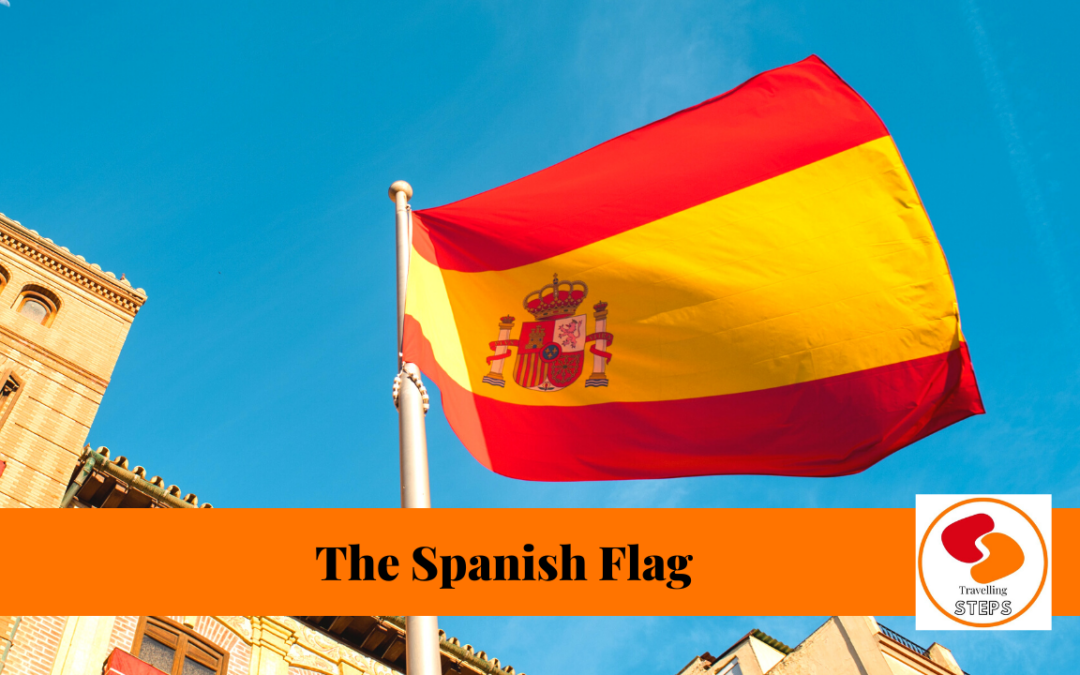Red and yellow are the colors of the Spanish flag, to be more precise it is red, gualda, and red. Gualda is a plant (reseda luteola) that grows in Mediterranean countries and was once widely used to dye fabrics in a deep yellow, almost golden color. In fact, some languages find a common root with “gualda” for yellow: German- gelb; Danish- gul; Rumanian- galben. Some other languages use gualda not as a root for yellow, but for gold.
Just a bit of History
To understand the origin of these colors, we need to go back in time. Some say yellow symbolizes the gold brought back by conquistadors from America, and red represents spilled blood. Well, far from that, the real answer, however, lies in the sea.
Until the late 17th century, there was no clear regulation for the various flags in the Iberian Peninsula. Remember that Spain was formed by the union of many different kingdoms and the legacy of those old kingdoms ruled the colors of the flags.
Isabella and Ferdinand (the Catholic Monarchs) once they discovered America and unified Spain, married their daughter Juana to the Belgian prince Philip the handsome. This good-looking man brought to Spain the dynasty of the Habsburgs and his flag, the flag of Burgundy. This flag is a white backdrop crossed by two red trunks forming an X shape. This was the “more or less” official royal flag in Spain during the ruling of the Habsburgs here in Spain.
We need to go forward to the year 1700, this year is when in Spain we changed our royal dynasty, from the Habsburgs to the Borbons. The grandson of King Louis XIV of France became King Philip V of Spain, introducing the Royal house of Borbon to Spain. Our new King Philip brought with him modernity, exquisite culture, and the white colored flag of the Borbons as a general one for the Spanish royals. Just think that at this moment in Spain, the army had one flag, the navy a different one, then the royals had yet a different one. It was chaos!
This white Borbon background was used by all the different Borbon Kingdoms present in Europe: Spain, France, or Parma. Sometimes it displayed the Burgundy cross, other times just the royal shield, sometimes the Burgundy cross could be accompanied by castles or lions, or even city shields, but always with a big white backdrop. They all looked too similar.
Let me make this a bit more complicated; just think who the biggest enemy of the Borbons were. Yes, you got it right, it was the English, whose flag at that time was a white backdrop with a red cross on it. Even more difficult, the Irish flag was a white backdrop with a red X on it. 50% of the flags in Europe where white with a red cross or X on them. It was nuts, really nuts.
The problem came during naval battles, the reflection of the sun on these white flags created confusion. Sometimes you could be fighting against a boat of your team, others you had to get too close to the other boats to make sure they were your allies and not your enemies, and as you can imagine, it was not a good idea….
To address this naval problem, in 1785, the new King of Spain Charles III decided to change the Spanish warships’ flag into three horizontal stripes, red – yellow – red, being the yellow part double the size of the red ones. This way our navy became more recognizable at sea. As Spain had so many ports around the world, over time, these colors became associated with Spain, but it was not the official flag yet.
In 1808, Spain was conquered by Napoleon, and the Bonaparte family brought their own flag. Once again with a white backdrop. It was then, when the young rebels fighting against Napoleon in the War of Independence (1808-1814) took the red-yellow-red flag as the symbol for Spain. Once Napoleon was kicked out of Spain, the Borbons returned. We had to wait until 1843, when Queen Isabella II made the red-yellow-ref flag the official Spanish flag.
During the Second Republic (1931-1936), the Republican flag had three equal-width stripes, but the bottom one turned purple, symbolizing Castilian rebellion against the monarchy. You can still find this flag hanging in some homes in Spain. Today it symbolizes that whoever has it, they do not support the Monarchy and would want Spain to become a Republic.
In the Spanish Civil War (1936-1939), there were two flags: the Republican (who fought agist Franco) red, yellow, and purple, and the Nationalist (who fought with Franco) red, yellow, and red.
During Franco’s dictatorship (1939-1975) the red-yellow-red flag became the official one, but the Generalissimo (Franco) changed it with his fascist touch adding the black eagle of Saint John, emblem of Queen Isabella I on top of the Royal Shield. It still gives me goosebumps thinking of that flag, they made us bow in front of it every morning in my early school years.
Franco’s death in 1975 and the signing of the Constitution in 1978 marked the flag’s official adoption. However, it wasn’t until 1981 that the eagle was removed, and the current design was finalized. The flag now features a left-centered coat of arms, a crown, and shields representing four historical kingdoms: Castilla, León, Aragón, Navarra, and Granada’s symbolic flower. Pay attention to the fleur-de-lis on blue, symbolizing the House of Bourbon, and the two Pillars of Hercules, marking Spain’s emblem since the 16th century.
Researching for this article, is when I have realized how many times, we have changed our flag here in Spain. I hope you have learnt a bit about my flag. If you want to learn more about Spain, you might want to join one of my tours.

